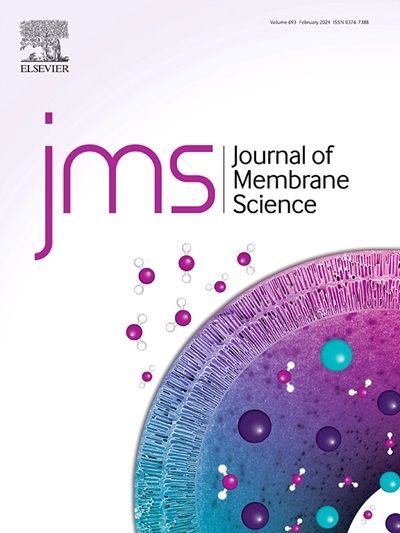Efficient separation of nanoemulsion and simultaneous membrane cleaning by electroflotation coupled membrane filtration process
IF 8.4
1区 工程技术
Q1 ENGINEERING, CHEMICAL
引用次数: 0
Abstract
The unique stability and complexity of oil-in-water (O/W) nanoemulsions originating from various fields of life and production pose significant challenges for their separation. In this work, a novel oil/water separation membrane (MFC/PPy/Ni–Co–P) is constructed by loading polypyrrole (PPy) particles on cellulose (MFC) membranes to provide growth sites for Ni–Co–P alloys, so as to endow the membrane with in situ bubble-generating capability. Under the external electric field, the MFC/PPy/Ni–Co–P membrane is integrated into the electroflotation filtration system as a cathode, and the effective membrane cleaning and demulsification of nanoemulsions can be realized through the micro-aeration environment constructed in situ. The MFC/PPy/Ni–Co–P membrane demonstrates outstanding performance in gravity-driven separation of various oil/water mixtures, with a rejection rate of >99.99 % and a flux of >3000 L∙m−2∙h−1. The interaction energy between oils with different viscosities and membranes is quantified by the extended Derjaguin-Landau-Verwey-Overbeek (XDLVO) theory, revealing the dominant role of acid-base interactions in the anti-fouling process. Notably, the integration of MFC/PPy/Ni–Co–P membrane into an electroflotation separation system enables the coalescence and separation of small-sized, highly stable nanoemulsions with separation efficiencies of >99.86 %. This study provides a novel approach for simultaneous and efficient nanoemulsion separation and membrane fouling remediation, showing a great potential in the development of efficient and sustainable oil/water separation technologies.

求助全文
约1分钟内获得全文
求助全文
来源期刊

Journal of Membrane Science
工程技术-高分子科学
CiteScore
17.10
自引率
17.90%
发文量
1031
审稿时长
2.5 months
期刊介绍:
The Journal of Membrane Science is a publication that focuses on membrane systems and is aimed at academic and industrial chemists, chemical engineers, materials scientists, and membranologists. It publishes original research and reviews on various aspects of membrane transport, membrane formation/structure, fouling, module/process design, and processes/applications. The journal primarily focuses on the structure, function, and performance of non-biological membranes but also includes papers that relate to biological membranes. The Journal of Membrane Science publishes Full Text Papers, State-of-the-Art Reviews, Letters to the Editor, and Perspectives.
 求助内容:
求助内容: 应助结果提醒方式:
应助结果提醒方式:


